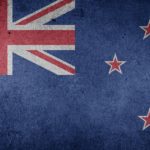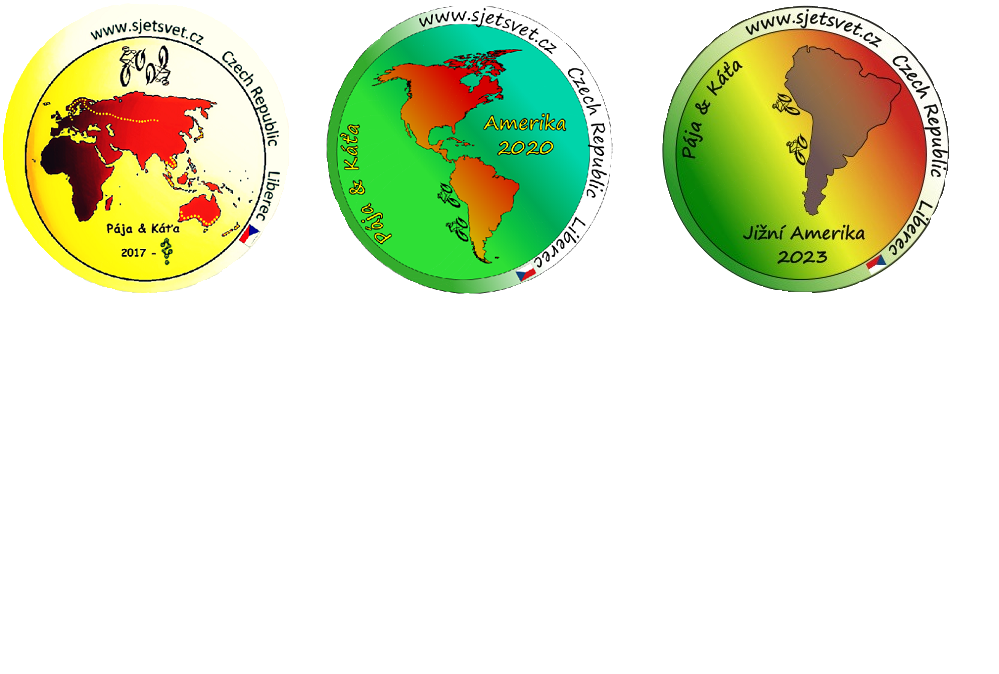New Zealand – South Island 1/3
New Zealand by bicycle – South Island – part 1
21. 9. 2018 – 5. 10. 2018 444,5 km
Ferrying, as you may have noticed, is one of our favorite activities. We always look forward to recharging everything and sitting on the sofa. This time we enjoyed this luxury for 3.5 hours.
We landed in the port town of Picton, where we immediately went shopping food for a few days and then started our journey on South Island of New Zealand. We were full of expectations because everyone we’ve met so far has told us that this island is much more beautiful than the northern one. Nearby Picton is Queen Charlot track, which leads along the sounds (something like fjords but wider and not so deep). This track can also be done by bike, so we chose to try it. As soon as we joint the track the asphalt was replaced by a narrow, forest trail. We cycled to the first campsite and decided to stay there. We put uup the tent miand went to explore the area. We found a beautiful puddle where we wanted to have an evening bath, when Paja saw a flightless, brown bird with a long beak. It must be kiwi! (there are three different forms of kiwi in Zelanda – in this case, a non-flying bird living only in this country, there are kiwi, furry fruits that we know very well, and the Zealanders call themselves kiwi). It’s said that it’s almost impossible to see him in the wild and we were lucky. Instead of bathing, we began to follow the kiwi who ran through the thickets deeper into the forest and then he disappeare. In the evening, we received a message from our Wellington hosts who wanted to know how we enjoyed the first day on the South Island. We immediately answered that we saw their mythical kiwi. Their dry answer devastated us – It’s impossible, you can see it only with an experienced guide, you probably saw weka. “Weka? What the hell is that? ” We quickly googled for what it is. Well, it was a weka. Kiwi looks a little different. Many tourists make the same mistake.
In the morning we kept cycling the trail. The panniers bumped with each of the roots, and the tires were covered with the mud. We had beautiful views of the water surface below us that changed its color from dark blue to turquoise. Although the road was beautiful, after a few kilometers we went back to the asphalt because it wasn’t sich a fun with loaded bikes. We reached the road down to Havelock, where we found a cheap camp.
In the evening, we planned where to go next. Next place was one of the sunniest cities in New Zealand – Nelson. We found on the map one cycle trail that leads there, and it should even be shorter than a highway full of cars. With a feeling of good work we went to sleeping bags. For breakfast we had oatmeal like usually,we packed a tent and admired for another adventure we left the camp. At first everything went well, we got used to the local gravel, then the road went up. We knew that a steep, about 7km long hill awaited us. But what, still better than dense traffic. The gravel began to be very rough and full of rocks, it was pretty tough, we were counting each kilometer to the top. Later, only rough, large stones were left. It wasn’t fun anymore. We were sweating everywhere, the water in the bottles quickly dwindled and that stupid hill didn’t end . At the peak, we realized that the downhill would be tough too. Our suffering continued. The brakes were whistling. At dusk, we finally reached Nelson, if we had cycled on the road, we could have been there at noon. We found the nearest supermarket and bought planty of food as a reward for a hard day.
There are several Great Walks in Zealand, the most beautiful hiking trips. One of them is just close to Nelson, Abel Tasman National Park. In the village, from where you enter the park, we found an older couple who liked to host cyclists. This has solved our problem, where to leave our stuff and bikes and enjoy the hike. The whole track from south to north is for five days, but we didn‘t want be there so long. We also didn‘t like the option to go a there and back the same way, but because natural scenery can be admired both by land and by sea by kayaks, we decided to combine these options. We started out early in the morning. It was a beautiful sunny day, but the wind was cold, it wasn’t good enought to swim. We put out stuff into a kayak and paddled along the coast. Because of the wind, the locals didn‘t recommend us too far from the shore. We landed at a deserted beach and enjoyed the atmosphere. Later at another beach we made a picnic. We visited about five beaches and then we started to hike back. Walking was not very demanding, all the way through the forest. Sometimes, along the way, we could see the beaches we had visited before. When we had a break, weka came out of the bushes. She wasn‘t shy at all, she came to us. We just laughed at our naivety at that time when we considered it a kiwi.
After visiting the National Park, we planned the next direction of our journey. We didn‘t want to get too far from this area, because we found there a job at the hop farm and we should have had interview during that week. Dumb situation. We texted to our potential employers whether we could meet earlier but didn‘t reply. So we headed slowly toward the farm. Halfway down the road, we found a camp. After a long time, it started to rain, and so we were wet and cold. But ah, the camp was under construction. We already thought we were unlucky when the owner, who was working there, invited us to his land above the camp. Two alpacas were lying there, among which a peacock proudly walked, and hens and geese ran in the distance. Erik showed us the toilet, which was carved out, the water, which flow from the mountain streams, and the pizza oven, which was handmade of clay. Where are we? There was no time to argue, we put up a tent and hid from the rain. The next day Erik introduced us to his own house, which he built by himself, or rather he carved out partially. Inside, he had two stoves, which he also had made by himself, the greenhouse connected with the bathroom and the “fridge” in the rock. A vegetable garden was built around the camp. He lives mostly from what he grows, and he is currently building a camp to have some income. Magic place! We decided to spend a few days here, at least to the meeting at the hops farm. But before they contacted us, we found another hops job at another farm nerby, where we were planting the hop.
Later we moved to our appointed farm, where we are training the hops for a couple of weeks. The work is quite demanding for the legs, so maybe the final start of our journey will be less hard than the one from the Hastings.















































 Previous Post
Previous Post